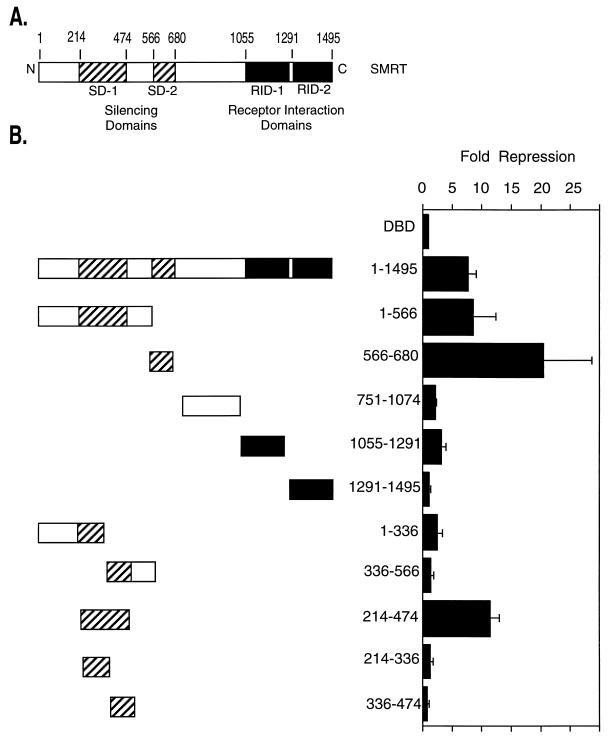FIG. 1.
Transcriptional silencing domains in SMRT. (A) Schematic representation of the SMRT corepressor. The regions involved in interactions with the nuclear hormone receptors are indicated (denoted receptor interaction domains, RID-1 and RID-2), as are the regions able to mediate transcriptional repression when expressed as GAL4-DBD fusions (SD-1 and SD-2). Numbers above the schematic refer to the relevant amino acid positions. (B) Domains of SMRT able to repress reporter gene expression in a transient-transfection assay. Different regions of SMRT, as depicted schematically on the left, were fused in frame to a GAL4-DBD-coding sequence and were expressed in CV-1 mammalian cells. The cells were simultaneously transfected with a reporter plasmid containing an SV40 late promoter bearing five binding sites (GAL4 17-mers) for the GAL4-DBD and driving the expression of a luciferase reporter gene. The cells were harvested 48 h later, and the luciferase activity was determined relative to that of a pCH110 β-galactosidase reporter, lacking GAL4 binding sites, employed as a negative control. Fold repression (right) was calculated as the reduction in luciferase expression mediated by a GAL4-DBD fusion construct relative to that mediated by an empty GAL4-DBD (DBD). The results presented represent the averages and standard deviations obtained from at least two duplicate experiments.

